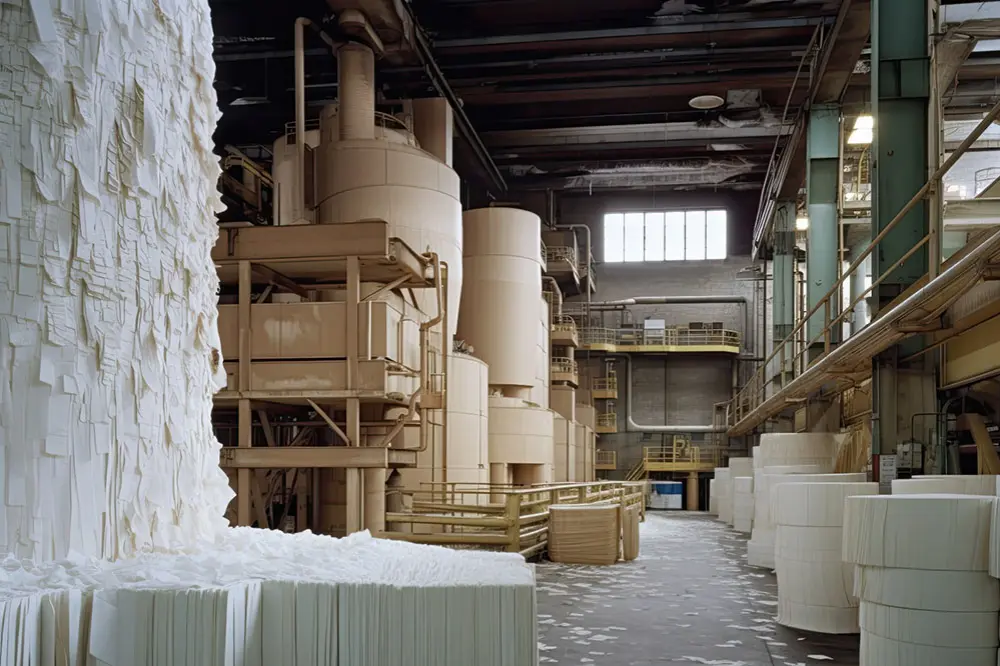
Paper & pulp
Paper, perhaps the most widely used material in everyday life, consist of a network of plant fibers with a high cellulose content that have been treated using various water-based processes, placed on a sieve, and finally dried. Although these fibers can be obtained from numerous different plants and trees, the most important source used is conifer wood due to the length and strength of its fibers. One third of all the wood processed worldwide is used in paper and pulp production.
Paper manufacture consumes a large quantity of resources, especially water and energy, although it also requires large quantities of raw materials and chemicals. Approximately 2-18 m3 of water (depending on the effluent management system used and whether water is recovered) and between 2 and 2.5 tons of wood are required to produce one ton of paper.
During the manufacturing process, water acts as a disintegration medium for the raw materials, a transport for fibers, and for paper formation.
The process commences with separation of cellulose from the other substances (lignin, oils, resins, etc.), which represents 50% by weight. To extract cellulose fibers, the wood must first be crushed (mechanical pulp) or wood chips subjected to a chemical treatment (chemical pulp). In the latter case, treatment involves either the use of an alkaline product (sulfate or caustic soda) or a sulfite. In both cases the aim is to solubilize the lignin to release the cellulose fibers. There are major differences between the two treatments. Thus, the alkaline method generates black effluents that are highly contaminating and are generally treated to recover the sodium sulfide and caustic soda. In the sulfite method, some of the chemicals used, such as sulfuric acid, can also be recovered. However, those chemicals that cannot be recovered are lost with waste effluent along with remnants of cellulose that have not been retained, thus meaning that the effluent has a high COD. If the pulp is obtained mechanically, the quality of the paste obtained is lower but less liquid waste is produced.
Fluid Sep Technologies provides the best and cost effective solutions to treat the waste water with advance technologies

